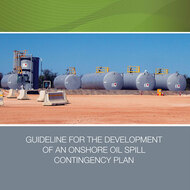DMP has published a new guideline for developing an Onshore Oil Spill Contingency Plan.
| Date: | Thursday, 04 August 2016 |
|---|
The Department of Mines and Petroleum has published the Guideline for the Development of an Onshore Oil Spill Contingency Plan as part of its Reforming Environmental Regulation program.
The guideline’s purpose is to provide assistance to petroleum operators in the development of their onshore Oil Spill Contingency Plan (OSCP). The guideline helps to:
- ensure that operators are aware of their legal obligations under petroleum legislation
- satisfy the requirements of the Petroleum and Geothermal Energy Resources (Environment) Regulations 2012 and the Petroleum Pipelines (Environment) Regulations 2012
- satisfy the expectations of DMP
- provide a practical reference tool for personnel responding to an onshore oil spill incident
- assist in ensuring that best practice management approaches are adopted.
Under regulation 15(10) of the Petroleum and Geothermal Energy Resources (Environment) Regulations 2012 and regulation 15(8) of the Petroleum Pipelines (Environment) Regulations 2012, an OSCP is required to be included in the implementation strategy component of an Environment Plan.
The regulations require an OSCP to set out details regarding:
- preparations to be made for the possibility of an oil spill
- emergency response arrangements to be implemented if an oil spill occurs
- recovery arrangements to be implemented if an oil spill occurs
- current oil spill trajectory modelling that applies to the activity.
The operator is also required to conduct tests of the emergency response arrangements set out in the OSCP at specified intervals and describe these tests.
On 6 January 2016 the draft guideline was released for an eight-week public feedback period with submissions closing on 4 March 2016.
The Guideline for the Development of an Onshore Oil Spill Contingency Plan – Response to Comments report is available on the DMP website. Stakeholder comments and DMP responses have been grouped according to the relevant section of the guideline.
DMP would like to thank stakeholders for their considered feedback and for providing valuable input into the process.
For further information please email DMP’s Environment Division.

